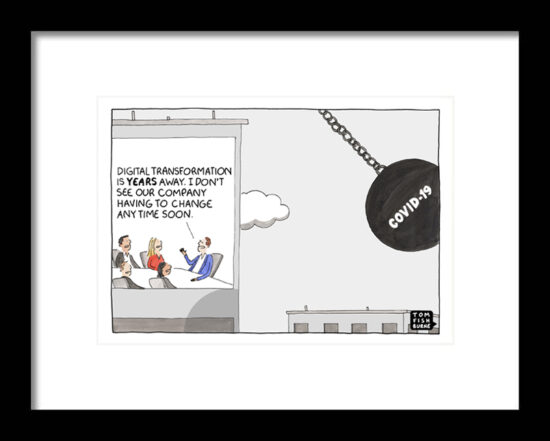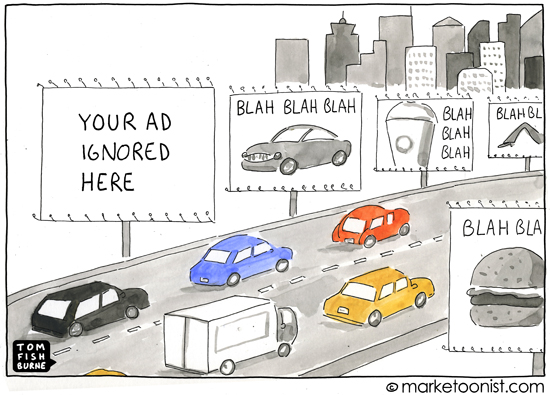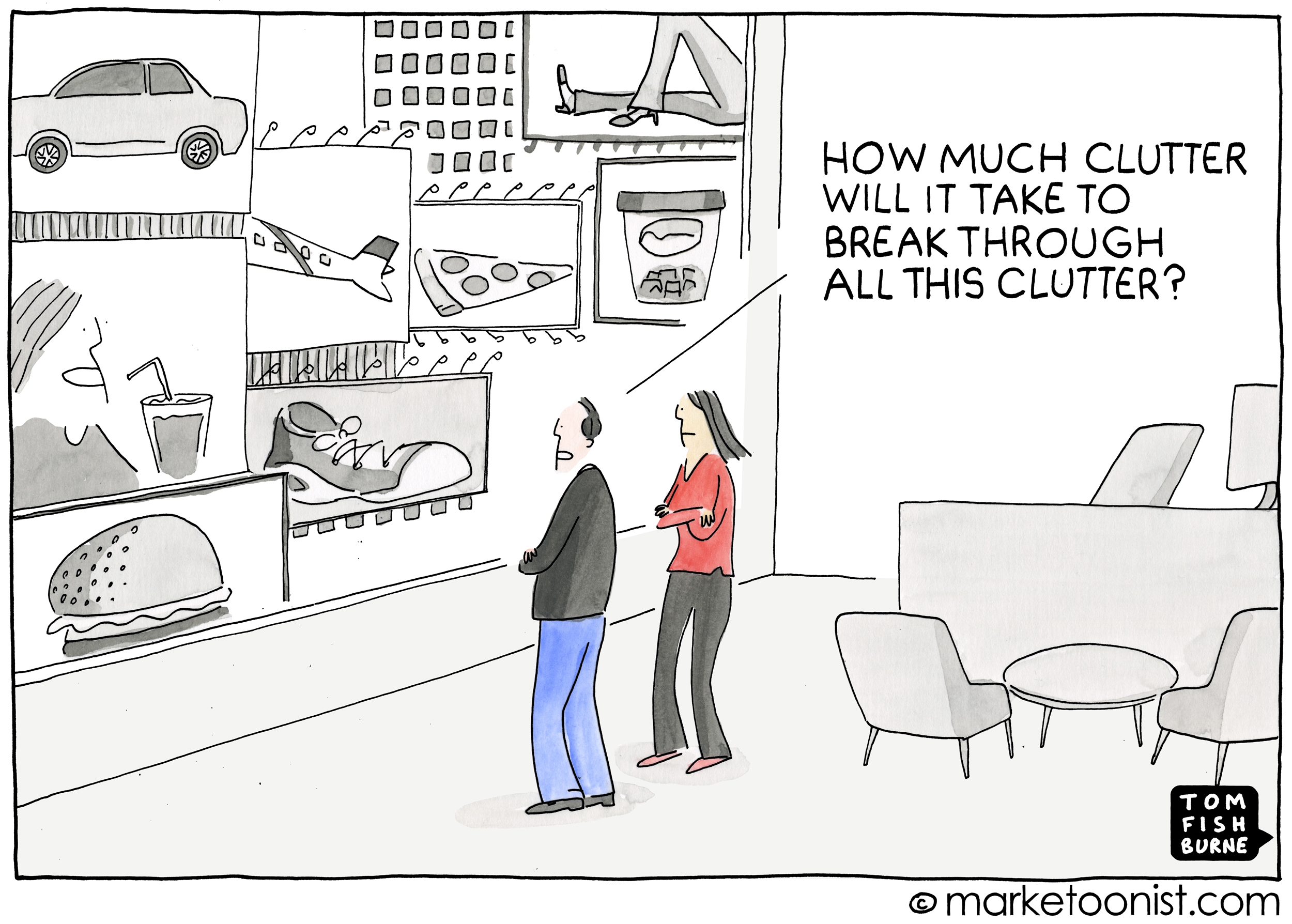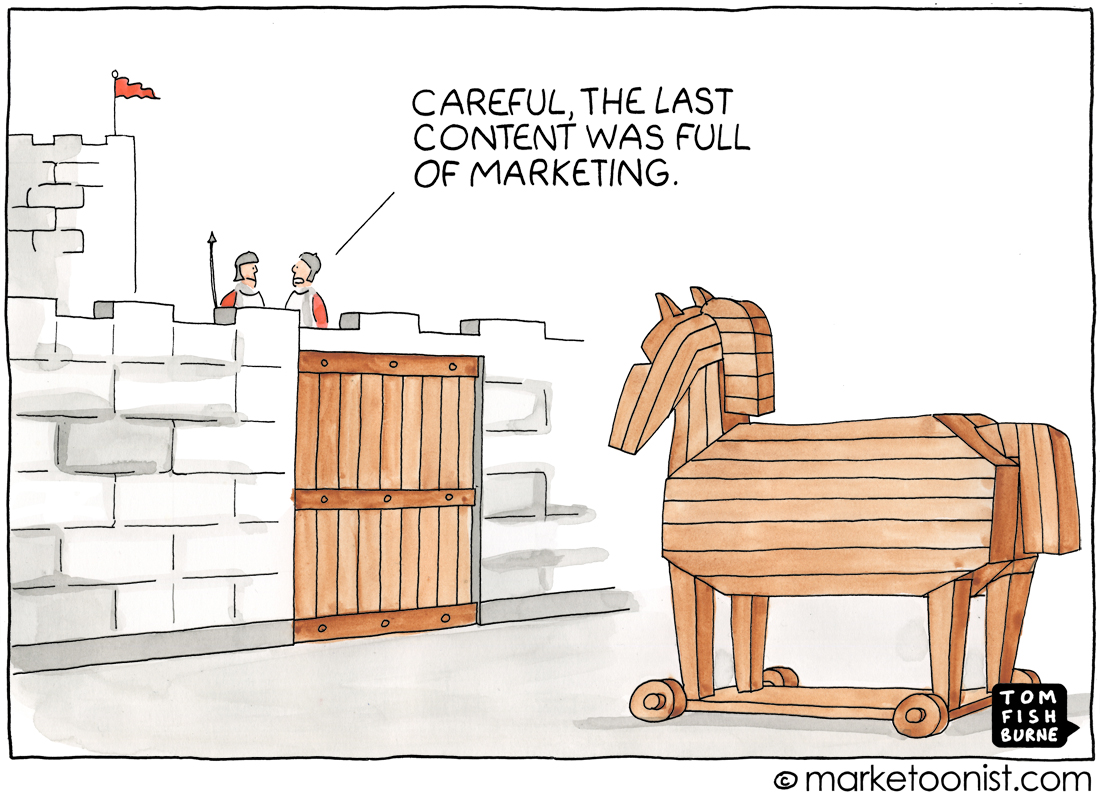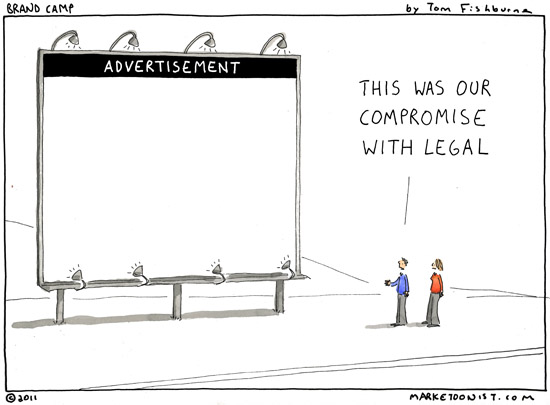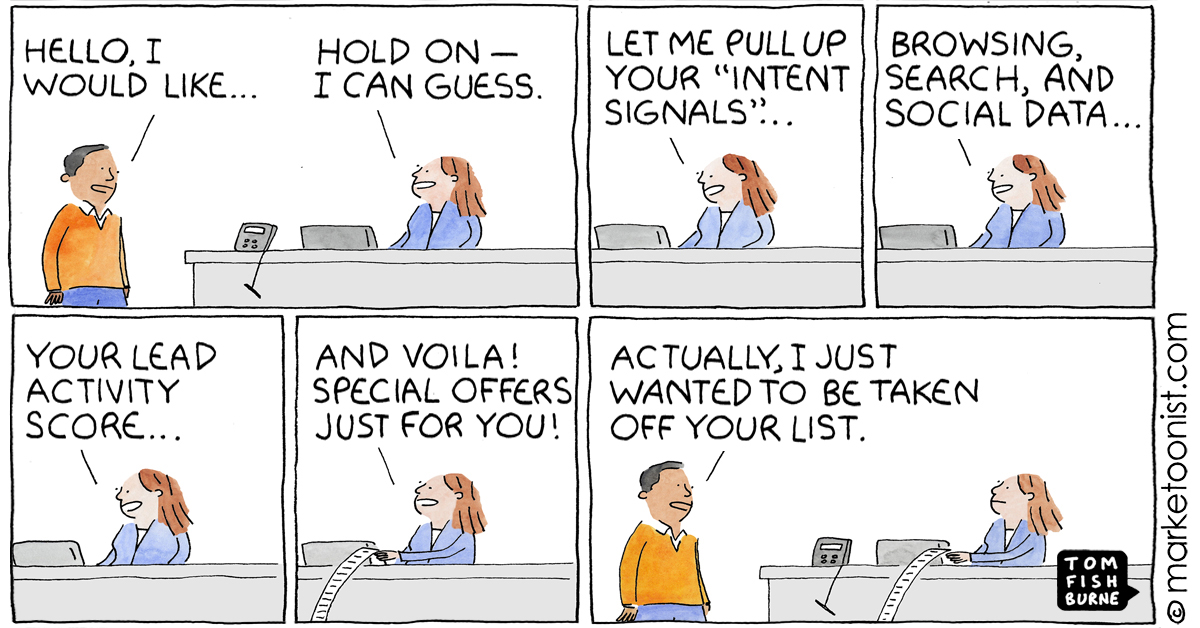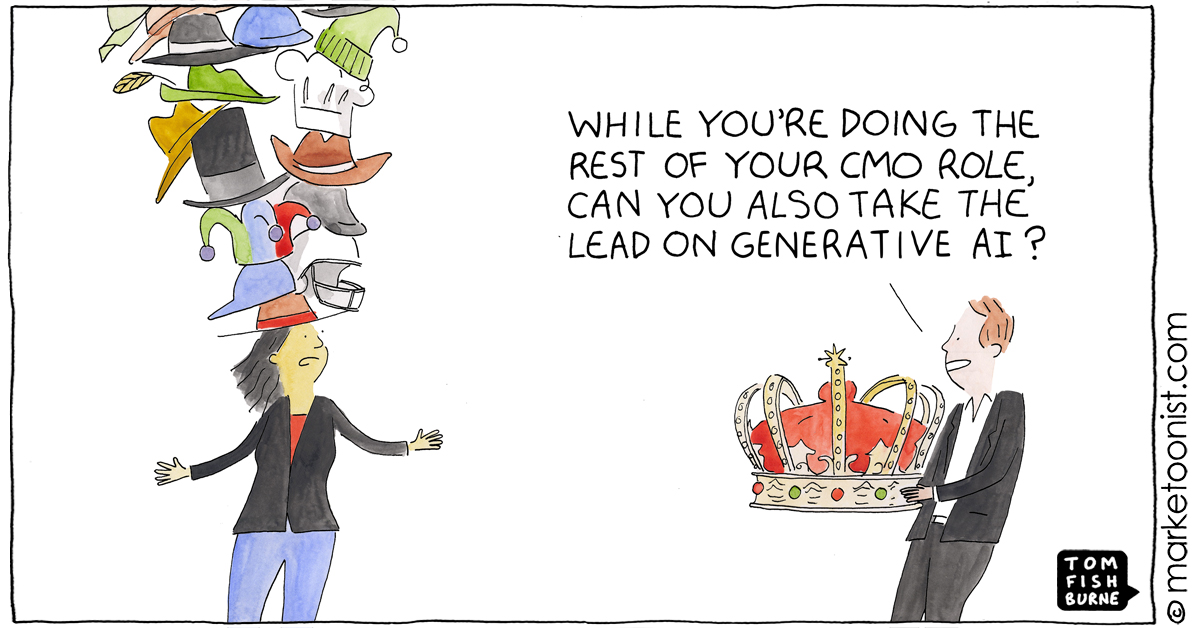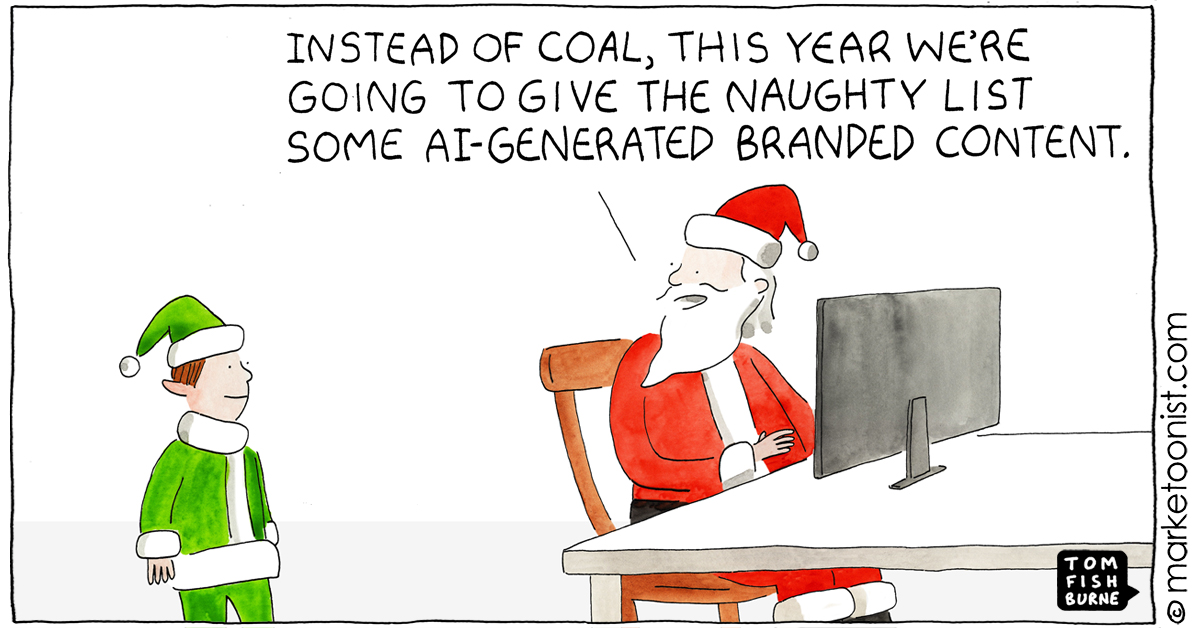We can’t break through the clutter by adding to it. Yet the majority of marketing communication just creates more of the same. I recently caught up with Adam Morgan, founder of eatbigfish, and learned about a project he’s developing...
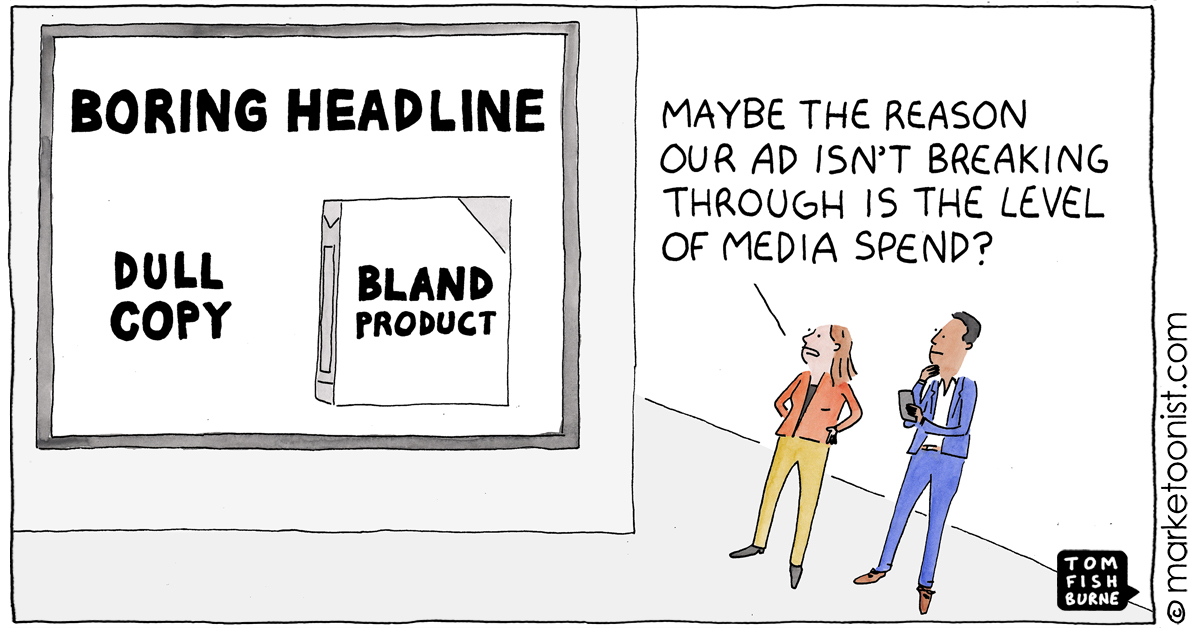
We can’t break through the clutter by adding to it. Yet the majority of marketing communication just creates more of the same.
I recently caught up with Adam Morgan, founder of eatbigfish, and learned about a project he’s developing to quantify the cost of being dull (and the opportunity to be more interesting). As Adam put it:
“Dull is expensive commercially, because you have to put so much more effort and money to land the dull message than an interesting one.”
Along with Peter Field who analyzed IPA Effectiveness Data, Adam pegs the average “cost” of running a dull campaign at Ł10m, in terms of additional media spend needed to get the same audience reaction as a more interesting campaign. The Ł10m cost of dull can be double in some categories where share of voice is more expensive. They point at System1 data that 48% of B2C ad responses and 78% of B2B ad responses were classified as “neutral.”
According to Peter:
“We’re not saying dull campaigns are ineffective. It’s just they do not work very hard. And you get a much, much bigger performance out of these more exciting campaigns – it can be six or seven times greater for every euro, dollar or pound you put behind them.”
Adam and Peter found that campaigns with larger budgets tended to be duller than less-resourced campaigns. This creates opportunities for brands to punch harder than their weight, if only they can buck the pressure to play it safe.
Kevin Lynch, founder and former creative director of Oatly, recently explored some of what allowed Oatly to break through the clutter of the dairy category when it reinvented itself in 2013:
“There was no C-suite swoop–ins at Oatly; no complicated approval processes, no testing, and risk was something that was welcomed, not avoided. All the internal machinations that dull the edges of marketing did not exist. And that’s largely because of trust.”
This was a departure from how Oatly operated for the 20 years prior, when the brand “followed all of the FMCG rules it could find and created marketing that only a focus group could love.”
I love Kevin’s expression — “internal machinations that dull the edges of marketing.” Fighting the “cost of dull” is an inside job. We have to champion the interesting and push back against the dulled edges that lead to dull work.
As Kevin at Oatly also said:
“Your biggest competition isn’t other brands in the category; it’s indifference.”
Here are a few related cartoons I’ve drawn over the years:
The post Break through the Clutter first appeared on Marketoonist | Tom Fishburne.



